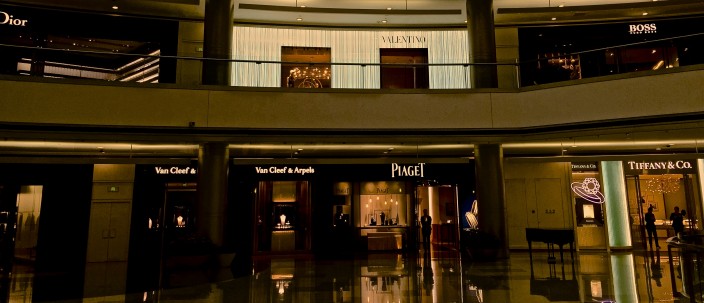Luxury and Time
I thought luxury was not my thing. I have not had a watch for decades. They scratch my portable computer wrist pad. And the ones I had before were neither flashy nor expensive. But now I do work with the luxury industry. I like it. There is a building in Shanghai that harbors the most famous and exorbitant luxury brands. The six floor shopping mall is about the size of a European regional airport. And the office tower is sixty six floor high. That is a lot of sixes, as six is a number for good fortune in Chinese. And fortune you need to buy stuff in this mall. Even coffee. At the Uva cafeteria, a cup (delicious and served on white linen) cost 70 Yuan. That is a little more than 9 Euros, definitely more than in Milan.
But as I keep coming to this place, I realize that there are beautiful things here. Real artists have spent dozens of hours to make a chandelier or a piece of furniture. That goes of course for shoes, clothes and watches, and so on. But this is where I see the challenge.
Luxury is a form of art
It is by definition expensive. But that is a mere detail. What matters is that those objects are gorgeous. They stop time. Looking at them takes you in a different realm. There, humanity shows its ability to create an artistic emotion and rival with nature. To me, that is beautiful and reassuring.
What is not, is that many –most?– of the brands I see here are just money machines. It is not much about the art, it is about the selling. Then there are the buyers. This is China, so in this sort of place it is not unusual to see odd couples. By this I mean the man wear shorts and a cheap T-Shirt, and may be a three pound gold watch. The wife wears almost nothing, but it has to look very expensive.
Of course this is not limited to China, as it encompasses a life style and a value system. This category of people do not buy luxury brand for the quality and the beauty of the item. They go for the logo, the flashiest, the latest and the pricey. It is not about stopping time, as I mentioned before, it is about running after time. You have to have the latest bag. This display ensure that they stay abreast of those who have. It is definitely a case of “what I own conditions how I feel.” But skip a beat, miss a collection, and then you fall of the back of the truck. That is maybe the fun part of the game.
Many famous luxury brands thrive on this. And this is the game where it takes two, one to run for the bait and one to provide it. Again, that is a value system thing. There is nothing to lament about.
Stopping time
Of course, some have not also try to play the game. A couple of years ago, I saw on Chinese TV a journalist explaining this. Some secretaries would starve themselves for a whole year to buy these bags. In a country where counterfeit is available just about anywhere that sounds strange. Even more so when the only place where they can show it off is the metro. Where others carry the same, but fake, bag and you really can’t tell the difference.
But what motorizes these behaviors? The underlying perception equate owning and showing to well-being. It is a degraded form of guaranteeing access to resources. Showing all the stuff you own is a good way to make sure you stay on top of the pyramid. But this pyramid is slippery. The brand that sells cheap plastic for the price of gold is in total control. Here, luxury is just about power. And luxury has nothing to do with power.
Except for those people. They would need an education in “stopping the time” and “wondering.” But they are too busy staying on top of their lonely pyramid. I know a Chinese man who works for local banks and “educates” the newly rich. This guy has a career in front of him!

